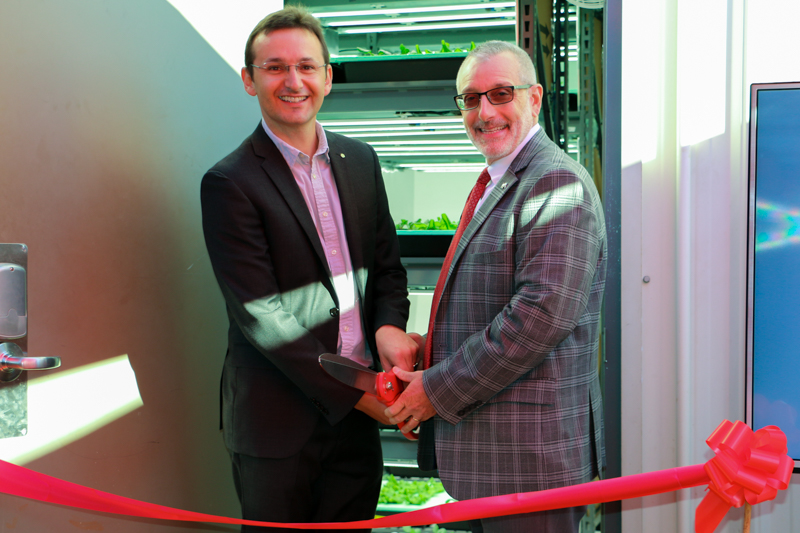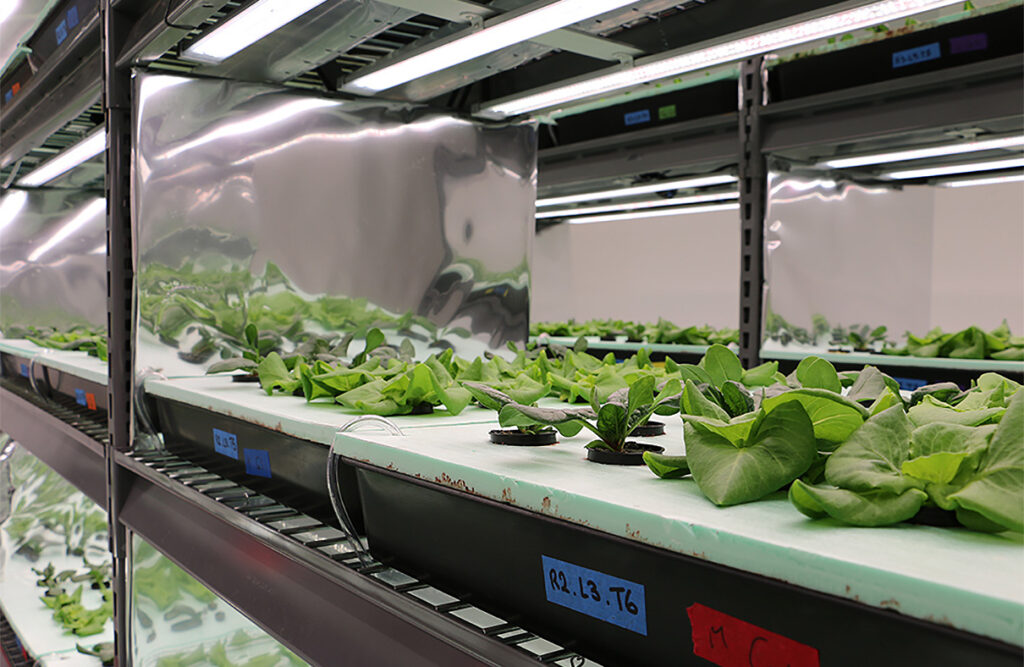Two large-scale vertical farms have been created on campus at America’s University of Georgia (UGA) in part due to a new partnership between the Ferrarezi Lab in UGA’s College of Agricultural and Environmental Sciences (CAES) and Agrify – a company that produces proprietary microenvironment-controlled vertical farming units.
The two new UGA growing rooms will allow researchers to complete replicated trials, testing two to three different factors on each plant. Current research projects in the vertical farms include comparing the performance of different hydroponic growing systems in lettuce and strawberries, comparing plant response and resource utilization across multiple fertilizer management strategies and light intensities, plant sap analysis to optimize fertilizer in CEA crops, the influence of airflow on calcium uptake on lettuce and spinach in vertical farming, and more.
Agrify donated 26 four-by-four-foot light fixtures to the CEA project, expanding research capacity. The US$26,000 investment was part of the approximate overall US$120,000 project cost. The adjustable-spectrum lights have a beam angle of 120 degrees and an average lifetime of approximately 50,000 hours, or 5.7 years if the lights are operated 24 hours per day.
“Our goal is to train the next generation of horticulturists in using the environmental manipulation needed for an operational vertical farm,” said Rhuanito Ferrarezi, associate professor of controlled environment agriculture in the CAES Department of Horticulture. “The LED light donation is unique because the lights allow us to use high light intensities when performing experiments.”
“This partnership is an incredible opportunity for Agrify to give back to the agricultural and academic communities who have given so much to Agrify,” said David Kessler, chief science officer at Agrify. “One of Agrify’s research and manufacturing facilities, located in Covington, Georgia, has enabled this partnership to grow beyond equipment and now includes an internship program and joint Ph.D. research opportunities. We look forward to being able to help further the CEA community’s understanding of the intersection of photobiology and environmental control systems.”
At the ribbon cutting, CAES Dean and Director Nick T. Place shared his excitement at seeing students at all levels – undergraduate, master’s, doctoral and postdoctoral – working on CEA projects, emphasizing how the work is integral to the college’s initiative to make CAES the number one college of agriculture and environmental sciences in the United States.




